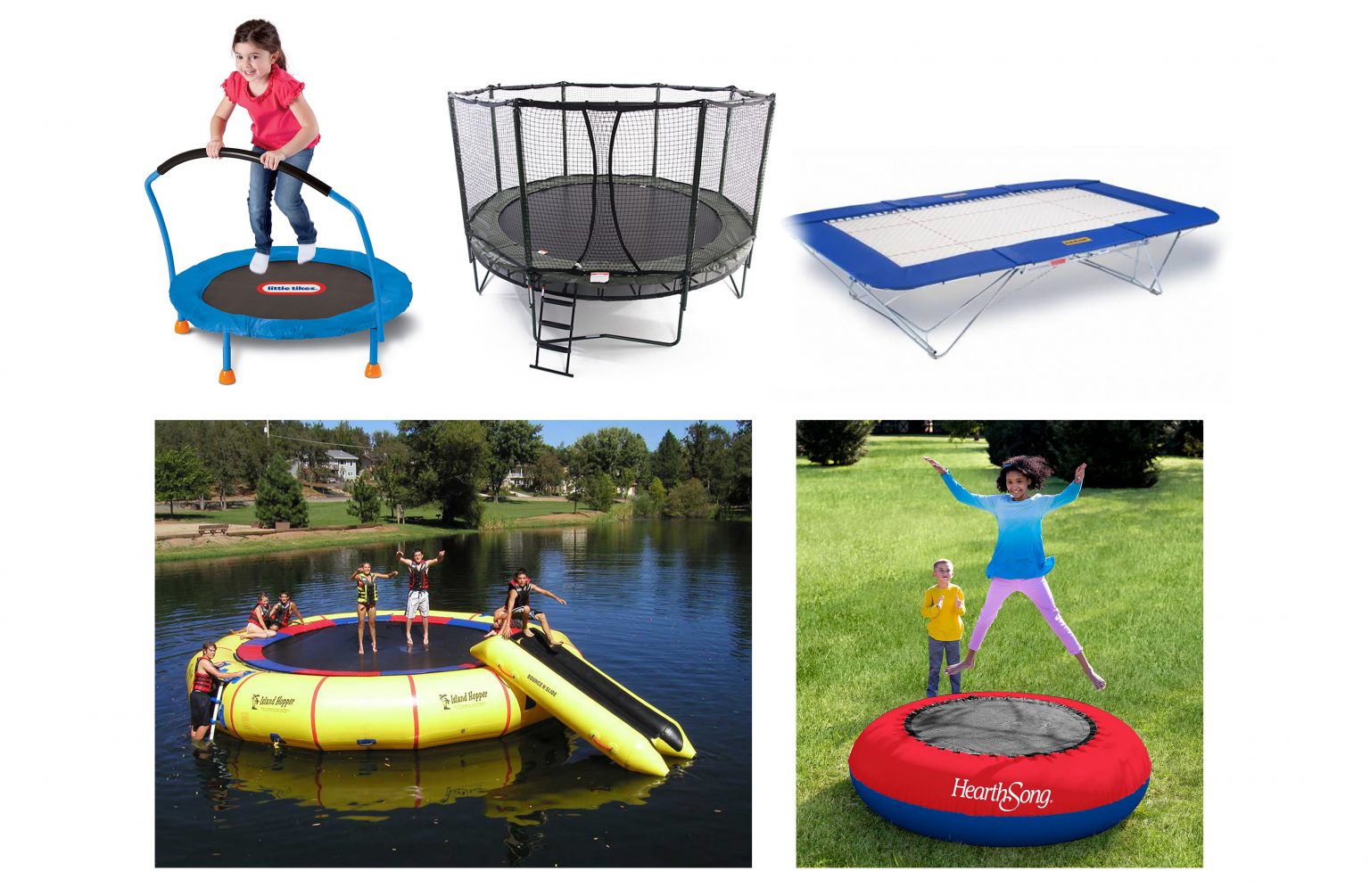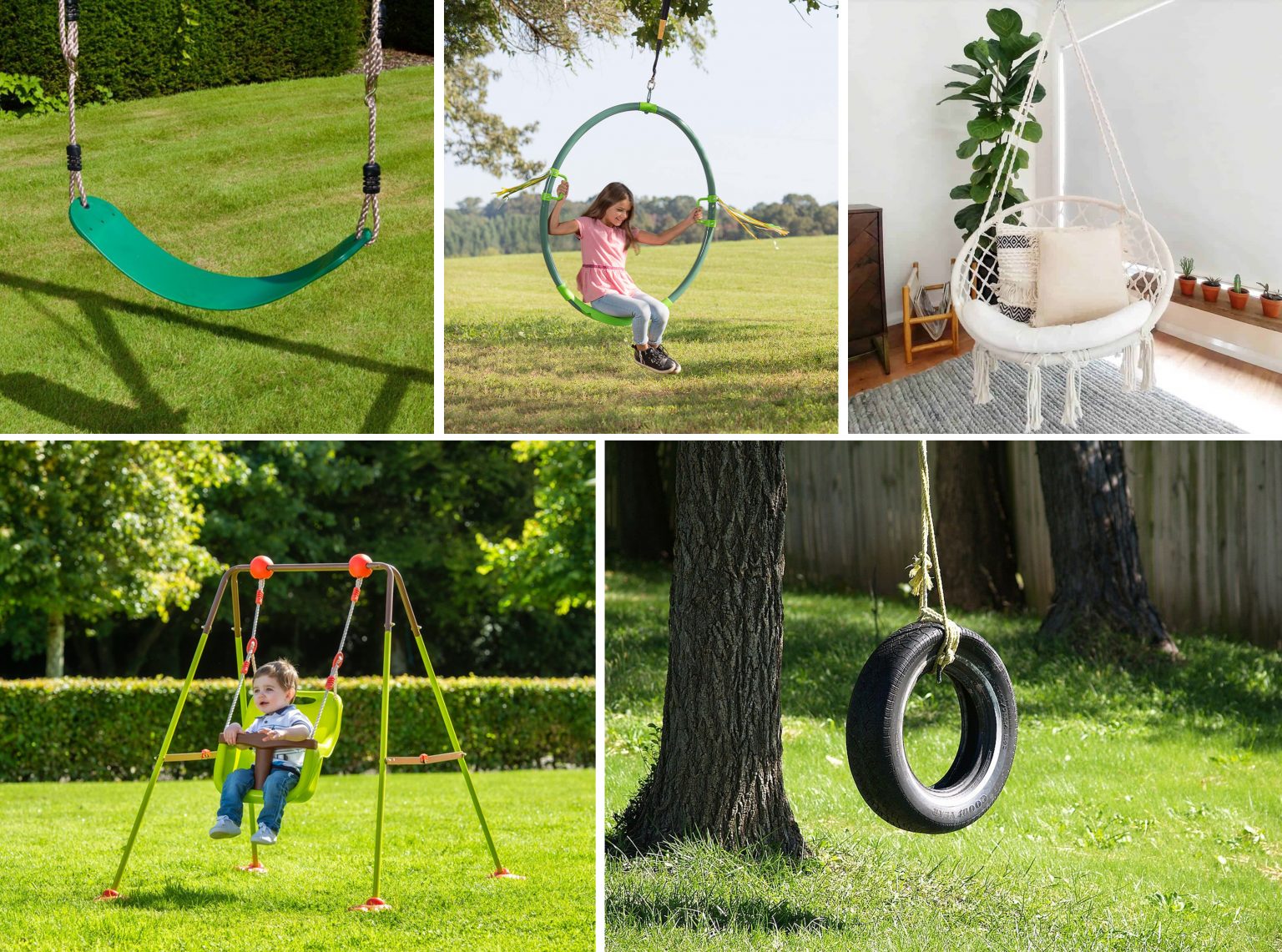
What is a trampoline? A trampoline is a device consisting of an open fabric or metal frame that supports people as they jump up and down.
The modern trampoline was invented in the 1930s by George Nissen, who used gymnastic springs to create a type of toy he called the "bouncing board." By 1940, his company had created an improved model called the "trampoline," which became popular in American backyards during World War II because it used very little steel that could be put into war production.
Today there are many different types of trampolines for all sorts of purposes: from backyard fun to training elite athletes. We'll take you through them below!
Elite trampoline
The elite trampoline or "competition" trampoline was invented by George Nissen and Larry Griswold in 1954. It is designed to allow greater freedom of movement when athletes compete on it, hence the more complicated shape (the blue lines mark its size above). The height of the side frame is adjustable for different levels of competition.
Because elite trampolines can be quite expensive, they are usually found in training facilities and at competitions. They can cost several thousand dollars!
Commercial trampoline
The commercial trampoline is a scaled-down version of the elite model that is designed for backyard use. The smaller size requires fewer springs to achieve the same degree of bounce.
The commercial roller trampoline uses a "double bouncing" technique to allow greater movement. Instead of one person jumping on the trampoline at a time, two jumpers can move together and jump in time. This allows for more acrobatic moves and can create patterns that are difficult to achieve on conventional trampolines.
Commercial trampolines have all but replaced the classic backyard trampoline and can be found in many parts of the world.
Toddler trampoline
Toddler trampolines are a scaled-down version of the commercial model and as the name suggests, are designed for use by toddlers. The smaller size and lower weight limit make them less likely to cause injury if children fall off or collide with others.
There is some concern that young children may not have enough strength to safely bounce on the trampoline. In addition, children under six should not do somersaults and flips on the trampoline because their lack of balance puts them at risk of injury.
Mini Trampoline
Mini trampolines are a scaled-down version of the commercial model but have no springs. They are designed for use in schools and other institutions where space is limited.
They are designed to be used by one person at a time and have mattresses underneath the frame for safety.
Rebounder or mini trampoline is a scaled-down version of the commercial model but has no springs. It is designed for use in schools and other institutions where space is limited.
It is designed to be used by one person at a time and has mattresses underneath the frame for safety.
Inflatable trampoline
Inflatable trampolines are designed to be carry-away toys that can be set up indoors or outdoors. They have no springs so they cannot bounce much (if at all). However, they are safe if used correctly and can be a good option for parents who want to allow their children to have some fun without the risks associated with spring trampolines.
Springfree Trampoline
The Springfree Trampoline uses bungee cords instead of springs to deliver its bounce to users, which makes it safer and more durable than standard trampolines with springs. It has no traditional frame in the center, but rather is maintained by flexible rods attached to the side frames at regular intervals.
The Springfree Trampoline was invented in Australia and gained fame after being featured on Shark Tank . Since then, it has been sold throughout North America, Europe and Asia.
Double-bounce trampoline
The double-bounce trampoline is a commercial model that uses special beds to allow two users to bounce together. This was inspired by the commercial roller trampolines described above, but allows greater freedom of movement than those models do.
Many modern trampolines (such as those made by Skywalker and Alley OOP) use a bungee mechanism to increase the elasticity of their beds or trampoline nets. These provide extra bounce, but do not allow double-bouncing.
Parachute Trampoline
The parachute trampoline is a commercial model that allows jumping without springs. The "parachutes" (which are actually made of a synthetic fabric) slow the user's descent and allow for greater control during tricks and stunts. The parachute trampolines are also sometimes used for advanced training by professional acrobats.
Water trampoline
A water trampoline is a small pool of water placed under a normal trampoline. It provides extra safety (in the event of fall), but makes jumping more difficult because of the higher center of mass.
It was invented in New Zealand and gained fame after being featured on Shark Tank. Since then, it has been sold throughout Australia.
Rectangular trampoline
Rectangular trampolines are the standard shape of commercially-made trampolines. They have a soft fabric bed, frame, and railings made from steel or aluminum.
The rectangular design makes it easier to perform tricks and stunts than on a traditional circular trampoline.
Round trampoline
Round trampolines use a similar design to the traditional rectangular trampoline. However, instead of being rectangular, they are round. The result is a product that can be set up in smaller spaces and does not require as much room for jumping as do square or rectangular units.
They are typically made of steel tubing with nylon netting attached to it.
Hand-trampoline
A hand trampoline is a commercial model designed for children with special needs. Using more padding, it allows users to exercise without falling off the unit in case of a missed jump.
It was invented in Germany and gained fame after being featured on Dragon's Den. Since then, it has been sold throughout Europe and Asia.
Caged Trampoline
A caged trampoline is a product that encircles the user with padding. It helps prevent injury, but requires significantly more floor space than traditional trampolines.
The caged trampoline was invented in China and gained fame after being featured on Shark Tank. Since then, it has been sold throughout Asia.
FAQS
What is the size of a trampoline?
Trampolines are usually between 9 feet and 10 feet in diameter. This is large enough for two people to bounce on it at once.
Note: check if your available space and house will fit with an appropriate sized trampoline before purchasing one. Most manufacturers also recommend that you leave a 3-foot safety zone around the unit.
How much does a trampoline cost?
Trampolines range in price from $100-$2,500. Trampolines for professional use can be up to $12,000 or more.
What is a trampoline made of?
The bed (or trampoline net) is made of a synthetic material or webbing. The frame is made of steel tubing (called "reinforcement bars") and the enclosure rails are typically made of aluminum or galvanized steel mesh.
The safety rods, springs, handles, etc., are either metal parts or plastic. The bed itself can be built with steel (called "steel coil spring trampoline") or elastic.
The bed can be made from nylon, polypropylene, vinyl coated polyester/cotton or a non-coated cotton version. The safety padding is sometimes foam but more often made of soft synthetic fiberfill.
How are Trampolines Installed?
Trampolines can be installed in a few different ways. If you have a house with a level, solid surface you can install your trampoline on the grass or concrete or asphalt. Most people don't want to damage their lawn and opt for renting patio pavers instead.
This is a good option for people who want to have the freedom of putting their trampoline on and taking it off as needed without the hassle of moving it each time. Many companies that rent patio pavers will also deliver them with installers, so you can save money on labor costs.
Another installation method is to use a heavy duty and strong wood frame and mount the trampoline on it, then place it in your backyard. This is necessary if you have slopes or lots of trees surrounding where you want to put your trampoline which would make a permanent installation difficult or impossible. One benefit to this option is that the wood frame protects you from grass, water or anything else that may impact your trampoline.
How should I store a Trampoline?
Some people invest in wind strong nets to prevent any accident during freezing weather condition. You can also close all the holes but two for air ventilation . If you want to leave it outside the whole year , you should cover your trampoline with a good UV protection. You can also store your trampoline in a garage or shed, but make sure that there is no way for animals like rodents to get inside and nest within the padding.
Another option is to buy a rebounder that folds up into a small, easily transportable package, which you can store anywhere. It's small enough to move from room-to-room or even outside on a nice day without the hassle of moving it at all. They're great for anyone who doesn't have an empty second room to dedicate to their exercise equipment.
Are there any health benefits to using them?
Trampolines are very good for muscle toning, weight loss and strengthening the heart. A study at the University of Bristol in England showed that people who regularly use a rebounder five times a week lose an average of 3 pounds each month without dieting or increasing their physical activity.
The American College of Sports Medicine reported that rebounding also offers a cardiovascular workout that can be better than jogging or power walking. Some studies have shown that rebounding is as effective as other types of exercise.
It's also fun for kids and adults. It helps them develop balance, coordination, flexibility and it enhances their immune system. How you use your trampoline is up to you!
Conclusion
So, in this article I covered four types of trampolines and explained their main features and benefits. All the types of trampoline are great for specific purposes, like children's activities or rebound therapy. For example, a trampoline with a safety enclosure can give your child the freedom to jump while knowing that they are safe, which is ideal for kids' parties.










